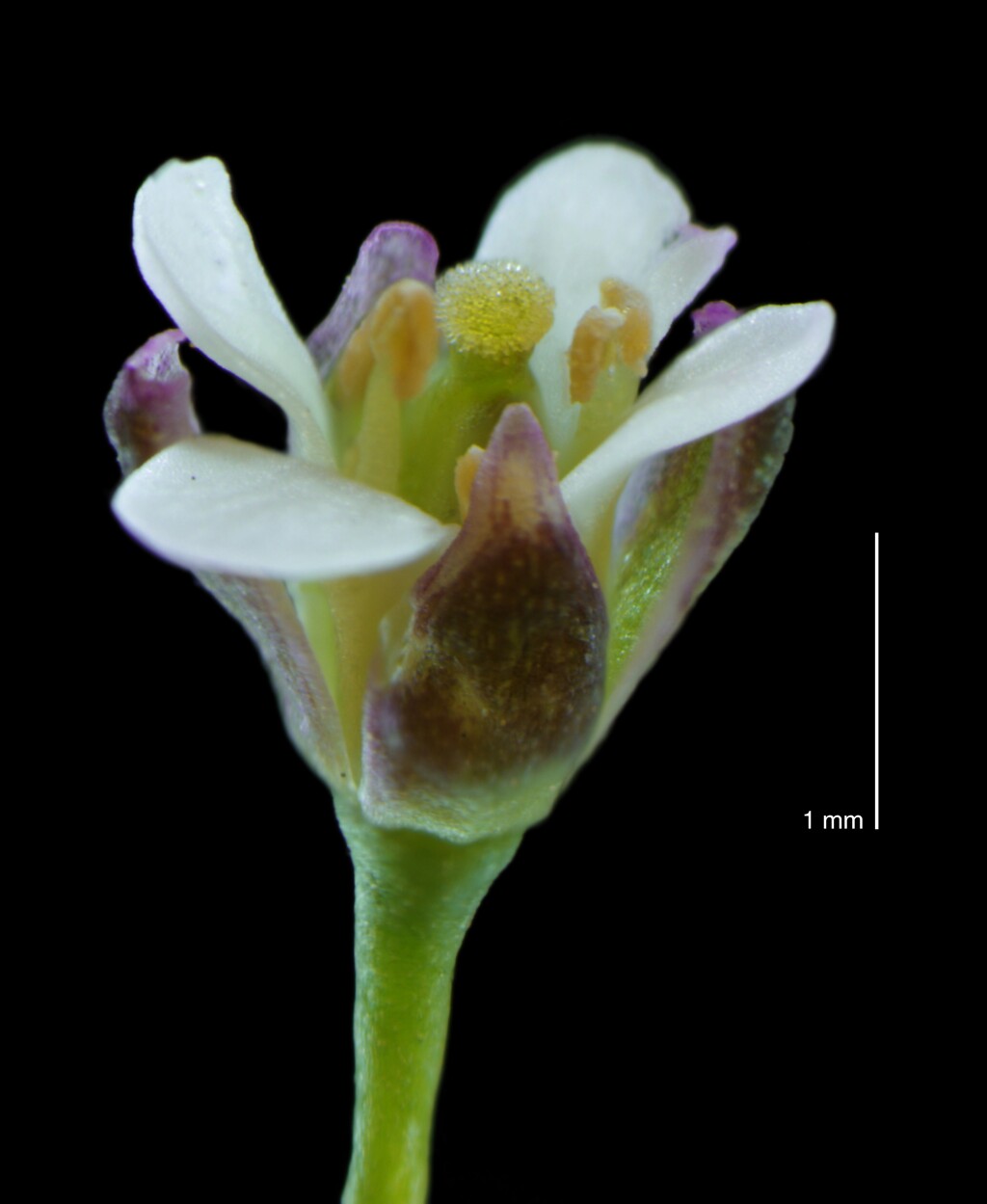Capsella bursa-pastoris
(L.) Medik. Shepherd's PursePlant 8–50 cm high, erect, with simple and stellate hairs, often becoming glabrous. Basal leaves in rosette, petiolate, pinnately lobed with large terminal lobe or entire; stem leaves sessile, bases lobed and often stem-clasping, margins toothed or entire. Sepals 1–2.5 mm long; petals 2–3 mm long, white. Fruit obtriangular, 6–9 mm long, 4–9 mm wide, apex broadly notched; valves with net-like venation; style to 0.5 mm long, if present; pedicels 8–17 mm long. Flowers mainly spring.
LoM, MuM, Wim, VVP, VRiv, MSB, RobP, MuF, GipP, OtP, Gold, CVU, NIS, EGL, EGU, HSF, HNF, OtR, MonT, VAlp. Naturalized all States, also New Zealand, etc. Native to Europe. Common weed of disturbed rural and urban areas. .
The flattened (perpendicular to septum), more or less triangular fruits are characteristic.
Entwisle, T.J. (1996). Brassicaceae. In: Walsh, N.G.; Entwisle, T.J., Flora of Victoria Vol. 3, Dicotyledons Winteraceae to Myrtaceae, pp. 399–459. Inkata Press, Melbourne.
 Spinning
Spinning




